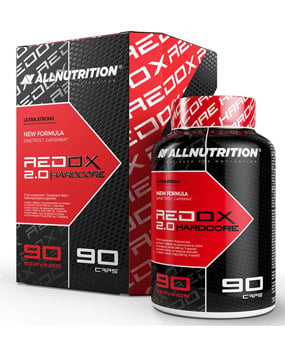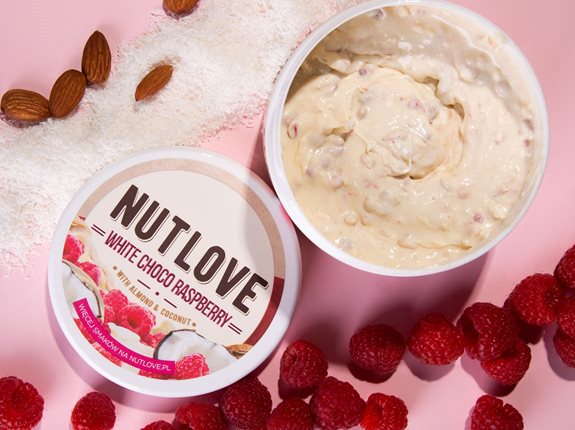Kolejny mit do obalenia:
Nie raz widzieliscie reklamy nowych form kreatyny - mówiących o tym że
'nie powoduja rewolucji zołądkowych'
'XXX to nowy, rewolucyjny, następca Monowodzianu Kreatyny. W porównaniu do swojego poprzednika charakteryzuje się o wiele lepszym wchłanianiem i silniejszym działanie'
'CEE jest obecnie najbardziej zaawansowaną formą kreatyny. Proces estryfikacyjny pozwolił na maksymalne zwiększenie stabilności kreatyny w kwaśnym środowisku soku żołądkowego, dzieki czemu znaczna ilość przyjętej kreatyny dostaje się do krwiobiegu w niezmienionej formie i nie ulega przemianie do nieaktywnej kreatyniny.'
'W porównaniu do tradycyjnego monohydratu kreatyny, jabłczan kreatyny charakteryzuje się lepszą stabilnością (nie ulega szybkiemu rozkładowi w kwaśnym środowisku soku kwasu żołądkowego do bezskutecznej kreatyniny), oraz przyswajalnością (znacznie szybciej wchłania się do krwioobiegu) co powoduje, że znacznie większa dawka kreatyny magazynowana jest w komórce mięśniowej.'
itd.
Faktycznie tak jest?
Postaram sie przedstawic kilka badań mówiących o tym że w najlpeszym wypadku kolejne formy kreatyny - a jest ich mnóstwo:
Creatine ethyl ester (CEE)
creatine pyruvate
creatine taurinate
creatine ethyl ester malate
creatine ethyl carbonate ester
creatine gluconate
creatine malate
dicreatine malate
tricreatine malate
creatine citrate
tricreatine citrate
Kre-Alkalyn
creatine phosphate
creatine alpha-ketoglutarate
creatine-6,8-thioctic Acid-ketoisocaproic Acid Calcium (CREAKIC)
creatine pyroglutamate
“conjugated creatine" (Con-Cret)
magnesium creatine chelate
creatine anhydrous
dicreatine orotate
tricreatine orotate
creatine alpha-amino butyrate
creatine HMB
“titrated creatine"
“creatine serum"
moga byc tak samo skuteczne jak kreatyna - TAK SAMO! - w najlpeszym wypadku.
Ale trzeba wziąść dwie poprawki:
-cena!
niekiedy ceny nowych wersji sa 3-5x wieksze niz tradycyjny mohohydrat
-dostępnośc/ilość badaą!
najlepiej sprawdzona forma kreatyny - co do dawek,dzialania jak i braku szkodliwości jest monohydrat kreatyny.
Nie smiem twierdzić ze nowe formy powodują skutki uboczne - ale śmiem twierdzić ze nie ma badań pokazujacych dokladny wplyw owych form przy dlugotrwalym stosowaniu.
Teraz kazdy musi sobie odpowiedzieć sam:
czy warto placic 300-500% więcej za produkt ktory daje nam efekty(co najwyzej)porownywalne ze stosowaniem monohydratu kreatyny?!
Kilka badan:
Effect of Oral Creatine Monohydrate and Creatine Phosphate Supplementation on Maximal Strength Indices, Body Composition, and Blood Pressure
The use of creatine as an ergogenic aid for athletic performance is growing in popularity, despite limited scientific support for its efficacy. The purpose of this study was to determine the effect of creatine (Cr) monohydrate (CrM) and creatine phosphate (CrP) supplementation on strength, body composition, and blood pressure over a 6-week period. Thirty-five males (age range = 19-29 years) with at least 2 years of strength training experience were tested on three separate occasions (pretest, 3 weeks, 6 weeks). Strength tests performed were the one-repetition maximum (1-RM) bench press, 1-RM leg press, and maximal repetitions on the seated preacher bar curl with a fixed amount of weight. Subjects were divided into three groups matched for strength: placebo (Pl), CrM, and CrP. All subjects were provided a standardized strength training regimen and ingested a loading dosage of 20 g per day for the first 3 days of the study, followed by a maintenance dose of 10 g per day for the remainder of the 6-week supplementation period. Significant differences were noted between the Pl group and the two Cr groups for changes in lean body mass, body weight, and 1-RM bench press. These results suggest that oral Cr supplementation will result in greater strength and fat-free mass development. In addition, CrP may be as effective as CrM in achieving these desired outcomes.
http://journals.lww.com/nsca-jscr/Abstract/1999/02000/Effect_of_Oral_Creatine_Monohydrate_and_Creatine.1.aspx
3 grupy:
-placebo
-grupa przyjmujaca (CrM)
-grupa przyjmująca fosforan kreatyny (CrP)
35 wysportowanych mezczyzn przyjmowalo kreatyne (3dni x20g + 6 tygodni x 10g)
wnioski:
najwiekszo osiagi osiagnely grupy CRM i CRP
nie zauwazono istatnych roznic pomiedzy CRP i CRM - co moze wskazywac na to ze fosforan kreatyny moze miec podobne wlasciwosci i działanie jak monohydrat kreatyny
DIFFERENCES IN CREATINE RETENTION AMONG THREE NUTRITIONAL
FORMULATIONS OF ORAL CREATINE SUPPLEMENTS
Previous research has indicated that creatine
retention is influenced by intramuscular creatine concentration and extracellular concentrations of glucose and
insulin. This study examined whether different nutritional strategies affect whole body creatine retention.
Specifically, 16 males with no history of creatine supplementation participated in this study. Subjects donated
24-hr urine samples for 4 days. After an initial control day, subjects were matched according to body mass and
assigned to ingest in a single blind manner either 5 g of dextrose (D), 5 g of creatine monohydrate (CM), 5 g of
CM + 18 g dextrose (C+D), or an effervescent creatine (EC) supplement (5 g of creatine + 18 g dextrose + 320
mg of sodium [as sodium carbonate and bicarbonate] + 175 mg of potassium [as potassium bicarbonate]) four
times/day for 3 days. Creatine retention was estimated by subtracting total urinary creatine excretion from total
supplemental creatine intake over the 3 day period. Data were analyzed by ANOVA. Results revealed that
creatine retention was increased following creatine supplementation in all groups (D=0±0; CM= 36.6±9;
C+D=48.0±7; EC=37.8±8 g, p=0.001). However, creatine retention in the C+D group was significantly greater
than the CM group while no differences were observed between the EC and CM groups. This resulted in a
greater percentage of creatine retention in the CD group (D= 0±0; CM=61±15; C+D=80±11; EC=63±13 %,
p=0.001). These preliminary findings suggest that in accordance with previous research, ingesting dextrose (18
g) with CM (5 g) augments whole body creatine retention while EC supplementation appears to be no more
effective than ingesting CM alone.
http://faculty.css.edu/tboone2/asep/Greenwood.pdf
4 grupy;
-placebo
-monohydrat kretyny przyjmująca 5gx4 m.kreatyny przez 3 dni
-monohydrat kreatyny + dextroza przyjmująca 5g m.kreatyny + 18g dextrozy x4 przez 3 dni
-cytrynian kreatyny (creatine citrate) + dextroza przyjmująca 5g cytryninanu kreatyny + 18g dextrozy x4 przez 3 dni
wyniki:
wydalanie kreatyny (kontrolny dzien/dzien 1/2/3):
monohydrat 0.54/5.54/8.58/9.28
mono + dextroza 0.30/2.60/3.00/6.42
cytrynian 0.28/7.30/8.01/7.00
magazynowanie kreatyny (dzien 1/2/3):
monohydrat 14.46/11.41/10.72
mono + dextroza 17.40/17.01/13.603
cytrynian 12.72/11.42/10.72

wniosek:
cytrynian kreatyny nie wykazal sie lepszymi wlasciwosciami od monohydratu kreatyny
a nawet monohydrat w pierwszym dniu byl srednio o 20% lepszy niz cytrynian
Mg2+-creatine chelate and a low-dose creatine supplementation regimen improve exercise performance.
We tested the hypotheses that, compared with a placebo group or creatine (Cr) group, a Mg(2+)-Cr chelate group would demonstrate improvements in the 1 repetition maximum (1RM) on the bench press and be able to perform more work at 70% of the 1RM for the bench press. Thirty-one weight-trained men were randomly assigned in a double-blind manner to a placebo group (multidextran), a Cr group (2.5 g of Cr daily), or a Mg(2+)-Cr group (2.5 g of Cr daily). Baseline data were collected for the bench press 1RM and maximal work completed during a fatigue set at 70% of the 1RM. Following 10 days of Cr supplementation, follow-up tests were completed for the dependent variables. Groups were similar when the change in 1RM was evaluated either absolutely or relatively. Both the Cr and the Mg(2+)-Cr groups had significantly larger increases in work, both absolutely and relatively, when compared with the placebo group. Partial support for the hypothesis suggests that low doses of Cr are effective at increasing fiber Cr content, and consequently, performance. Further, the Cr and Mg(2+)-Cr groups were similar in both performance tests, suggesting that the proposed mechanism of entry is no better than the conventional method when 2.5 g of Cr is administered and performance is measured as work. This study raises the possibility that a low dose of Cr may be an effective means of enhancing performance after short-term ingestion.
http://www.ncbi.nlm.nih.gov/pubmed/15142029
3 grupy;
-placebo
-przyjmujace monohydrat kreatyny 2,5g prze 10 dni
-przyjmujace magnezowy chelat kreatyny 2,5g przez okres 10dni
wyniki:
grupy przyjmujace kreatyne wykazaly wzrost wykonanej praqcy w porownaniu do placebo - jednak bez istotnych roznic miedzy dwiema roznymi formami kreatyni!
The effects of creatine ethyl ester supplementation combined with heavy resistance training on body composition, muscle performance, and serum and muscle creatine levels
Numerous creatine formulations have been developed primarily to maximize creatine absorption. Creatine ethyl ester is alleged to increase creatine bio-availability. This study examined how a seven-week supplementation regimen combined with resistance training affected body composition, muscle mass, muscle strength and power, serum and muscle creatine levels, and serum creatinine levels in 30 non-resistance-trained males. In a double-blind manner, participants were randomly assigned to a maltodextrose placebo (PLA), creatine monohydrate (CRT), or creatine ethyl ester (CEE) group. The supplements were orally ingested at a dose of 0.30 g/kg fat-free body mass (approximately 20 g/day) for five days followed by ingestion at 0.075 g/kg fat free mass (approximately 5 g/day) for 42 days. Results showed significantly higher serum creatine concentrations in PLA (p = 0.007) and CRT (p = 0.005) compared to CEE. Serum creatinine was greater in CEE compared to the PLA (p = 0.001) and CRT (p = 0.001) and increased at days 6, 27, and 48. Total muscle creatine content was significantly higher in CRT (p = 0.026) and CEE (p = 0.041) compared to PLA, with no differences between CRT and CEE. Significant changes over time were observed for body composition, body water, muscle strength and power variables, but no significant differences were observed between groups. In conclusion, when compared to creatine monohydrate, creatine ethyl ester was not as effective at increasing serum and muscle creatine levels or in improving body composition, muscle mass, strength, and power. Therefore, the improvements in these variables can most likely be attributed to the training protocol itself, rather than the supplementation regimen.
http://www.jissn.com/content/6/1/6
3 grupy:
-placebo
-przyjmujaca monohydrat kreatyny
-przyjmujaca etylowany ester kreatyny (CEE)
faza ładowania 5dni x 20g
pozniej przez 42dni 5g/dzien
wyniki:
poziom kreatyny we krwi:

PLA-placebo
CRT-monohydrat kreatyny
CEE-etylowy ester kreatyny
poziom kreatyny w miesniach

PLA-placebo
CRT-monohydrat kreatyny
CEE-etylowy ester kreatyny
zawartość kreatyniny we krwi

PLA-placebo
CRT-monohydrat kreatyny
CEE-etylowy ester kreatyny
kompozycja ciala:
masa ciala (poczatek/koniec)
CRT-89.42/90.09
CEE-73.69/75.32
beztluszczowa masa ciała:
CRT-63.27/65.12 (~+1,9kg)
CEE-59.06/60.11 (~+1kg)
tkanka tluszczowa:
CRT-21.55/20.08 (~-1,5kg)
CEE-10.44/10.88 (~+0,5kg)
wewnątrzkomórkowy poziom wody:
CRT-27.91/30.43 (~+2,5)
CEE-25.03/26.04 (~+1)
pozakomórkowy poziom wody:
CRT-18.44/18.55 (~0)
CEE-16.47/17.42 (~+1)
wniosek:
etylowy ester kreatyny nie wykazał lepszej skuteczności niż monohydrat kreatyny
CEE wykazal sie wiekszym poziomem kreatyniny,co moze swiadczyc o tym ze wiecej kreatyny (niz w przypadku monohydratu) jest przemieniana do kreatyniny
Zmieniony przez - solaros w dniu 2011-02-24 18:46:36
Nie raz widzieliscie reklamy nowych form kreatyny - mówiących o tym że
'nie powoduja rewolucji zołądkowych'
'XXX to nowy, rewolucyjny, następca Monowodzianu Kreatyny. W porównaniu do swojego poprzednika charakteryzuje się o wiele lepszym wchłanianiem i silniejszym działanie'
'CEE jest obecnie najbardziej zaawansowaną formą kreatyny. Proces estryfikacyjny pozwolił na maksymalne zwiększenie stabilności kreatyny w kwaśnym środowisku soku żołądkowego, dzieki czemu znaczna ilość przyjętej kreatyny dostaje się do krwiobiegu w niezmienionej formie i nie ulega przemianie do nieaktywnej kreatyniny.'
'W porównaniu do tradycyjnego monohydratu kreatyny, jabłczan kreatyny charakteryzuje się lepszą stabilnością (nie ulega szybkiemu rozkładowi w kwaśnym środowisku soku kwasu żołądkowego do bezskutecznej kreatyniny), oraz przyswajalnością (znacznie szybciej wchłania się do krwioobiegu) co powoduje, że znacznie większa dawka kreatyny magazynowana jest w komórce mięśniowej.'
itd.
Faktycznie tak jest?
Postaram sie przedstawic kilka badań mówiących o tym że w najlpeszym wypadku kolejne formy kreatyny - a jest ich mnóstwo:
Creatine ethyl ester (CEE)
creatine pyruvate
creatine taurinate
creatine ethyl ester malate
creatine ethyl carbonate ester
creatine gluconate
creatine malate
dicreatine malate
tricreatine malate
creatine citrate
tricreatine citrate
Kre-Alkalyn
creatine phosphate
creatine alpha-ketoglutarate
creatine-6,8-thioctic Acid-ketoisocaproic Acid Calcium (CREAKIC)
creatine pyroglutamate
“conjugated creatine" (Con-Cret)
magnesium creatine chelate
creatine anhydrous
dicreatine orotate
tricreatine orotate
creatine alpha-amino butyrate
creatine HMB
“titrated creatine"
“creatine serum"
moga byc tak samo skuteczne jak kreatyna - TAK SAMO! - w najlpeszym wypadku.
Ale trzeba wziąść dwie poprawki:
-cena!
niekiedy ceny nowych wersji sa 3-5x wieksze niz tradycyjny mohohydrat
-dostępnośc/ilość badaą!
najlepiej sprawdzona forma kreatyny - co do dawek,dzialania jak i braku szkodliwości jest monohydrat kreatyny.
Nie smiem twierdzić ze nowe formy powodują skutki uboczne - ale śmiem twierdzić ze nie ma badań pokazujacych dokladny wplyw owych form przy dlugotrwalym stosowaniu.
Teraz kazdy musi sobie odpowiedzieć sam:
czy warto placic 300-500% więcej za produkt ktory daje nam efekty(co najwyzej)porownywalne ze stosowaniem monohydratu kreatyny?!
Kilka badan:
Effect of Oral Creatine Monohydrate and Creatine Phosphate Supplementation on Maximal Strength Indices, Body Composition, and Blood Pressure
The use of creatine as an ergogenic aid for athletic performance is growing in popularity, despite limited scientific support for its efficacy. The purpose of this study was to determine the effect of creatine (Cr) monohydrate (CrM) and creatine phosphate (CrP) supplementation on strength, body composition, and blood pressure over a 6-week period. Thirty-five males (age range = 19-29 years) with at least 2 years of strength training experience were tested on three separate occasions (pretest, 3 weeks, 6 weeks). Strength tests performed were the one-repetition maximum (1-RM) bench press, 1-RM leg press, and maximal repetitions on the seated preacher bar curl with a fixed amount of weight. Subjects were divided into three groups matched for strength: placebo (Pl), CrM, and CrP. All subjects were provided a standardized strength training regimen and ingested a loading dosage of 20 g per day for the first 3 days of the study, followed by a maintenance dose of 10 g per day for the remainder of the 6-week supplementation period. Significant differences were noted between the Pl group and the two Cr groups for changes in lean body mass, body weight, and 1-RM bench press. These results suggest that oral Cr supplementation will result in greater strength and fat-free mass development. In addition, CrP may be as effective as CrM in achieving these desired outcomes.
http://journals.lww.com/nsca-jscr/Abstract/1999/02000/Effect_of_Oral_Creatine_Monohydrate_and_Creatine.1.aspx
3 grupy:
-placebo
-grupa przyjmujaca (CrM)
-grupa przyjmująca fosforan kreatyny (CrP)
35 wysportowanych mezczyzn przyjmowalo kreatyne (3dni x20g + 6 tygodni x 10g)
wnioski:
najwiekszo osiagi osiagnely grupy CRM i CRP
nie zauwazono istatnych roznic pomiedzy CRP i CRM - co moze wskazywac na to ze fosforan kreatyny moze miec podobne wlasciwosci i działanie jak monohydrat kreatyny
DIFFERENCES IN CREATINE RETENTION AMONG THREE NUTRITIONAL
FORMULATIONS OF ORAL CREATINE SUPPLEMENTS
Previous research has indicated that creatine
retention is influenced by intramuscular creatine concentration and extracellular concentrations of glucose and
insulin. This study examined whether different nutritional strategies affect whole body creatine retention.
Specifically, 16 males with no history of creatine supplementation participated in this study. Subjects donated
24-hr urine samples for 4 days. After an initial control day, subjects were matched according to body mass and
assigned to ingest in a single blind manner either 5 g of dextrose (D), 5 g of creatine monohydrate (CM), 5 g of
CM + 18 g dextrose (C+D), or an effervescent creatine (EC) supplement (5 g of creatine + 18 g dextrose + 320
mg of sodium [as sodium carbonate and bicarbonate] + 175 mg of potassium [as potassium bicarbonate]) four
times/day for 3 days. Creatine retention was estimated by subtracting total urinary creatine excretion from total
supplemental creatine intake over the 3 day period. Data were analyzed by ANOVA. Results revealed that
creatine retention was increased following creatine supplementation in all groups (D=0±0; CM= 36.6±9;
C+D=48.0±7; EC=37.8±8 g, p=0.001). However, creatine retention in the C+D group was significantly greater
than the CM group while no differences were observed between the EC and CM groups. This resulted in a
greater percentage of creatine retention in the CD group (D= 0±0; CM=61±15; C+D=80±11; EC=63±13 %,
p=0.001). These preliminary findings suggest that in accordance with previous research, ingesting dextrose (18
g) with CM (5 g) augments whole body creatine retention while EC supplementation appears to be no more
effective than ingesting CM alone.
http://faculty.css.edu/tboone2/asep/Greenwood.pdf
4 grupy;
-placebo
-monohydrat kretyny przyjmująca 5gx4 m.kreatyny przez 3 dni
-monohydrat kreatyny + dextroza przyjmująca 5g m.kreatyny + 18g dextrozy x4 przez 3 dni
-cytrynian kreatyny (creatine citrate) + dextroza przyjmująca 5g cytryninanu kreatyny + 18g dextrozy x4 przez 3 dni
wyniki:
wydalanie kreatyny (kontrolny dzien/dzien 1/2/3):
monohydrat 0.54/5.54/8.58/9.28
mono + dextroza 0.30/2.60/3.00/6.42
cytrynian 0.28/7.30/8.01/7.00
magazynowanie kreatyny (dzien 1/2/3):
monohydrat 14.46/11.41/10.72
mono + dextroza 17.40/17.01/13.603
cytrynian 12.72/11.42/10.72

wniosek:
cytrynian kreatyny nie wykazal sie lepszymi wlasciwosciami od monohydratu kreatyny
a nawet monohydrat w pierwszym dniu byl srednio o 20% lepszy niz cytrynian
Mg2+-creatine chelate and a low-dose creatine supplementation regimen improve exercise performance.
We tested the hypotheses that, compared with a placebo group or creatine (Cr) group, a Mg(2+)-Cr chelate group would demonstrate improvements in the 1 repetition maximum (1RM) on the bench press and be able to perform more work at 70% of the 1RM for the bench press. Thirty-one weight-trained men were randomly assigned in a double-blind manner to a placebo group (multidextran), a Cr group (2.5 g of Cr daily), or a Mg(2+)-Cr group (2.5 g of Cr daily). Baseline data were collected for the bench press 1RM and maximal work completed during a fatigue set at 70% of the 1RM. Following 10 days of Cr supplementation, follow-up tests were completed for the dependent variables. Groups were similar when the change in 1RM was evaluated either absolutely or relatively. Both the Cr and the Mg(2+)-Cr groups had significantly larger increases in work, both absolutely and relatively, when compared with the placebo group. Partial support for the hypothesis suggests that low doses of Cr are effective at increasing fiber Cr content, and consequently, performance. Further, the Cr and Mg(2+)-Cr groups were similar in both performance tests, suggesting that the proposed mechanism of entry is no better than the conventional method when 2.5 g of Cr is administered and performance is measured as work. This study raises the possibility that a low dose of Cr may be an effective means of enhancing performance after short-term ingestion.
http://www.ncbi.nlm.nih.gov/pubmed/15142029
3 grupy;
-placebo
-przyjmujace monohydrat kreatyny 2,5g prze 10 dni
-przyjmujace magnezowy chelat kreatyny 2,5g przez okres 10dni
wyniki:
grupy przyjmujace kreatyne wykazaly wzrost wykonanej praqcy w porownaniu do placebo - jednak bez istotnych roznic miedzy dwiema roznymi formami kreatyni!
The effects of creatine ethyl ester supplementation combined with heavy resistance training on body composition, muscle performance, and serum and muscle creatine levels
Numerous creatine formulations have been developed primarily to maximize creatine absorption. Creatine ethyl ester is alleged to increase creatine bio-availability. This study examined how a seven-week supplementation regimen combined with resistance training affected body composition, muscle mass, muscle strength and power, serum and muscle creatine levels, and serum creatinine levels in 30 non-resistance-trained males. In a double-blind manner, participants were randomly assigned to a maltodextrose placebo (PLA), creatine monohydrate (CRT), or creatine ethyl ester (CEE) group. The supplements were orally ingested at a dose of 0.30 g/kg fat-free body mass (approximately 20 g/day) for five days followed by ingestion at 0.075 g/kg fat free mass (approximately 5 g/day) for 42 days. Results showed significantly higher serum creatine concentrations in PLA (p = 0.007) and CRT (p = 0.005) compared to CEE. Serum creatinine was greater in CEE compared to the PLA (p = 0.001) and CRT (p = 0.001) and increased at days 6, 27, and 48. Total muscle creatine content was significantly higher in CRT (p = 0.026) and CEE (p = 0.041) compared to PLA, with no differences between CRT and CEE. Significant changes over time were observed for body composition, body water, muscle strength and power variables, but no significant differences were observed between groups. In conclusion, when compared to creatine monohydrate, creatine ethyl ester was not as effective at increasing serum and muscle creatine levels or in improving body composition, muscle mass, strength, and power. Therefore, the improvements in these variables can most likely be attributed to the training protocol itself, rather than the supplementation regimen.
http://www.jissn.com/content/6/1/6
3 grupy:
-placebo
-przyjmujaca monohydrat kreatyny
-przyjmujaca etylowany ester kreatyny (CEE)
faza ładowania 5dni x 20g
pozniej przez 42dni 5g/dzien
wyniki:
poziom kreatyny we krwi:

PLA-placebo
CRT-monohydrat kreatyny
CEE-etylowy ester kreatyny
poziom kreatyny w miesniach

PLA-placebo
CRT-monohydrat kreatyny
CEE-etylowy ester kreatyny
zawartość kreatyniny we krwi

PLA-placebo
CRT-monohydrat kreatyny
CEE-etylowy ester kreatyny
kompozycja ciala:
masa ciala (poczatek/koniec)
CRT-89.42/90.09
CEE-73.69/75.32
beztluszczowa masa ciała:
CRT-63.27/65.12 (~+1,9kg)
CEE-59.06/60.11 (~+1kg)
tkanka tluszczowa:
CRT-21.55/20.08 (~-1,5kg)
CEE-10.44/10.88 (~+0,5kg)
wewnątrzkomórkowy poziom wody:
CRT-27.91/30.43 (~+2,5)
CEE-25.03/26.04 (~+1)
pozakomórkowy poziom wody:
CRT-18.44/18.55 (~0)
CEE-16.47/17.42 (~+1)
wniosek:
etylowy ester kreatyny nie wykazał lepszej skuteczności niż monohydrat kreatyny
CEE wykazal sie wiekszym poziomem kreatyniny,co moze swiadczyc o tym ze wiecej kreatyny (niz w przypadku monohydratu) jest przemieniana do kreatyniny
Zmieniony przez - solaros w dniu 2011-02-24 18:46:36
1
"Cóż jest trucizną?
Wszystko jest trucizną i nic nie jest trucizną, tylko dawka czyni, że dana substancja nie jest trucizną!".
BLOG: http://www.sfd.pl/t1033576.html


 Krzysztof Piekarz
Krzysztof Piekarz

 ?"
?"






